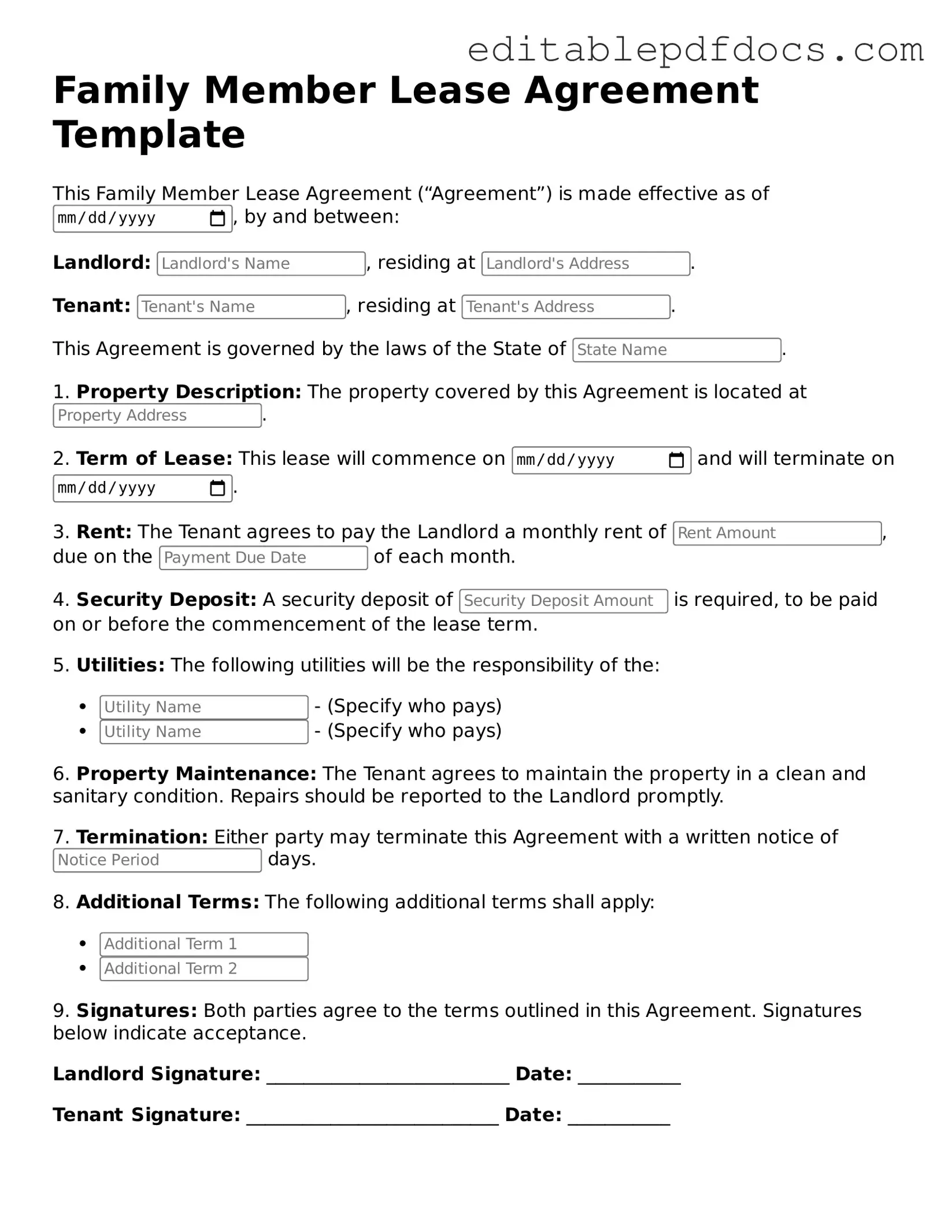Filling out a Family Member Lease Agreement form can seem straightforward, but many people make common mistakes that can lead to confusion or legal issues. One frequent error is failing to include all necessary details about the property. Ensure that the address, unit number, and any specific features of the property are clearly stated. Omitting this information can create misunderstandings about the rental space.
Another mistake is not specifying the rental amount and payment terms. Clearly outline the monthly rent, due dates, and acceptable payment methods. If these details are vague or missing, it may lead to disputes later on. Remember, clarity is key in any agreement.
People often overlook the importance of identifying all parties involved. Both the landlord and the tenant must be named in the agreement. If a family member is living in the property but is not listed, it can complicate matters, especially in case of eviction or disputes.
Additionally, many individuals forget to include the lease duration. Stating whether the lease is month-to-month or for a fixed term is essential. This information helps both parties understand their rights and obligations regarding the tenancy.
Another common oversight is not addressing maintenance responsibilities. Clearly outline who is responsible for repairs and maintenance. This can prevent conflicts over who should handle issues like plumbing or electrical problems.
Some people neglect to include terms regarding security deposits. Specify the amount, conditions for its return, and any deductions that may apply. Without this information, misunderstandings about the deposit can arise at the end of the lease.
Finally, failing to sign and date the agreement can render it invalid. Both parties must review and sign the document to confirm their understanding and acceptance of the terms. A signed agreement is crucial for enforcing any of the outlined conditions.
